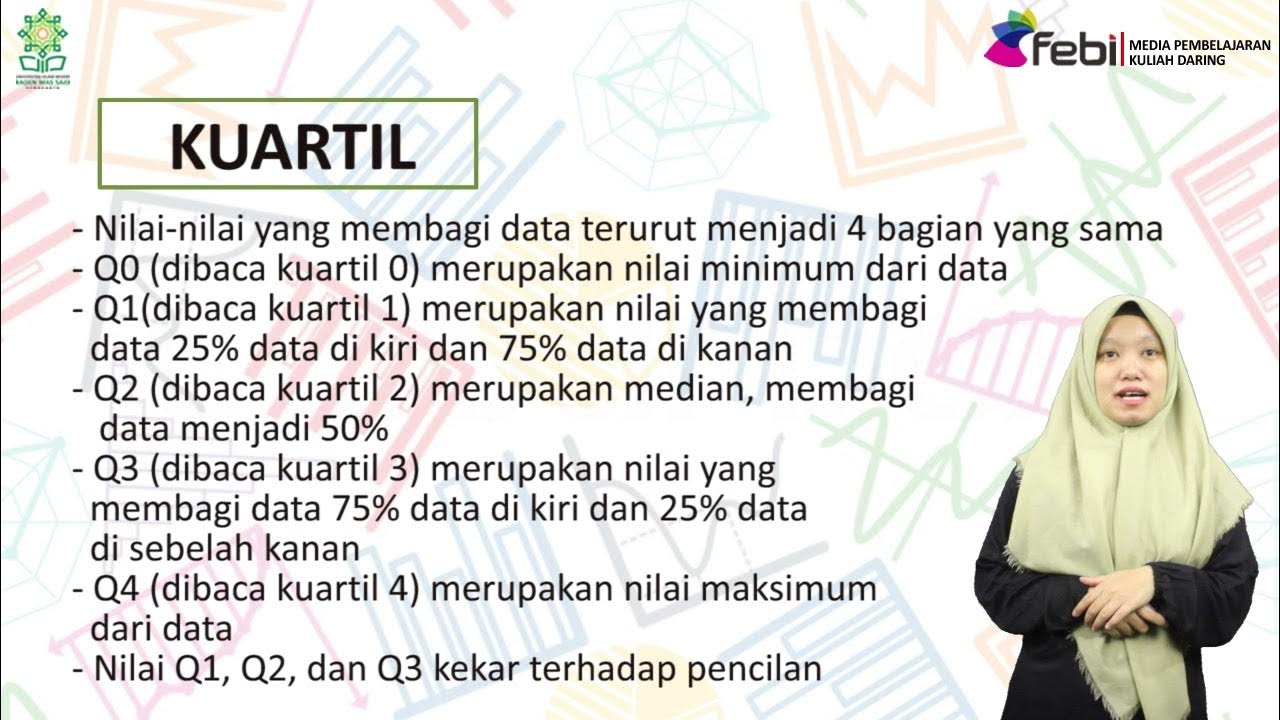FREQUENCY DISTRIBUTION: Common Terminologies Vid#4 FREE Tutorial | Statistics | EASILY EXPLAINED!
Summary
TLDRThis video tutorial offers a detailed and comprehensive guide to understanding frequency distribution and key statistical terms. It explains concepts like raw data, range, frequency distribution, class limits, boundaries, intervals, and more. The tutorial aims to teach viewers how to organize data into frequency distribution tables, create graphs, and visualize data. It also introduces important terminologies such as relative frequency, cumulative frequency, and midpoints. The video is designed to help both beginners and advanced learners enhance their knowledge of statistics, and promises more tutorials on frequency distribution and graphs in upcoming episodes.
Takeaways
- 📊 Frequency distribution is a method of organizing data into categories, showing the number of observations in each non-overlapping class.
- 📉 Range is the difference between the highest and lowest values in a dataset, found by subtracting the lowest value from the highest.
- 📋 Raw data refers to the original data collected from either primary or secondary sources before any statistical tests are applied.
- 📈 Class limits, also known as apparent limits, define the highest and lowest values for each class in a frequency distribution table, typically as whole numbers.
- 🔢 Class boundaries, or real limits, are the upper and lower values for grouped data, often using decimals that end in 0.5 for more precision.
- 📐 The interval, or width, is the distance between the lower and upper class boundaries, calculated by subtracting the lower boundary from the upper boundary.
- 📊 Frequency, denoted by 'F', is the count of values within a specific class in a frequency distribution.
- 📏 Relative frequency (RF) is calculated by dividing the frequency of a class by the total number of values, representing the proportion of the class frequency.
- 📊 Cumulative frequency (CF) is the sum of all frequencies up to the upper boundary of a class, used to track total observations over intervals.
- 📍 Midpoint represents the average of the lower and upper class limits for each class, providing a central reference point for the data.
Q & A
What is raw data in the context of statistical research?
-Raw data refers to the data collected in its original form, either from a primary or secondary source, before any processing or analysis. It is the basis for statistical tests.
How is the range of a dataset calculated?
-The range is calculated by subtracting the lowest value in a dataset from the highest value. It shows the spread of the data.
What is a frequency distribution, and why is it important?
-A frequency distribution organizes data in a tabular form using mutually exclusive classes, showing the number of observations in each. It helps in presenting data more formally and aids in visualizing data through charts and graphs.
What are class limits in a frequency distribution?
-Class limits, also known as apparent limits, represent the highest and lowest values within each class in a frequency distribution table. These limits are typically whole numbers.
What are class boundaries, and how do they differ from class limits?
-Class boundaries, sometimes called real limits, are the upper and lower values of a class in a grouped frequency distribution. They include additional decimal places compared to class limits, usually ending in 0.5.
How is the class interval (or width) of a class calculated?
-The class interval is the distance between the lower and upper class boundaries. It is found by subtracting the lower class boundary from the upper class boundary.
What does frequency represent in a frequency distribution table?
-Frequency, denoted by the letter F, represents the number of observations or values that fall within a specific class in a frequency distribution.
What is relative frequency, and how is it calculated?
-Relative frequency, denoted by RF, is calculated by dividing the frequency of each class by the total number of values in the dataset. It indicates the proportion of observations in each class.
How is percentage related to relative frequency?
-Percentage is obtained by multiplying the relative frequency by 100. It expresses the proportion of observations in each class as a percentage of the total.
What is cumulative frequency, and where is it usually found in a frequency distribution table?
-Cumulative frequency, denoted by CF, is the sum of frequencies accumulated up to the upper boundary of a class. It is typically displayed beside the frequency column in a frequency distribution table.
What is the midpoint in a frequency distribution, and how is it calculated?
-The midpoint is the value halfway between the class limits of each class and is representative of the data in that class. It is calculated by averaging the lower and upper class limits.
Outlines

Cette section est réservée aux utilisateurs payants. Améliorez votre compte pour accéder à cette section.
Améliorer maintenantMindmap

Cette section est réservée aux utilisateurs payants. Améliorez votre compte pour accéder à cette section.
Améliorer maintenantKeywords

Cette section est réservée aux utilisateurs payants. Améliorez votre compte pour accéder à cette section.
Améliorer maintenantHighlights

Cette section est réservée aux utilisateurs payants. Améliorez votre compte pour accéder à cette section.
Améliorer maintenantTranscripts

Cette section est réservée aux utilisateurs payants. Améliorez votre compte pour accéder à cette section.
Améliorer maintenantVoir Plus de Vidéos Connexes

Menentukan Nilai Modus Data Kelompok Matematika SMA

Statistika (Distribusi Frekuensi Data Tunggal dan Kelompok)

Organization Of Data 30 Minutes Revision | Class 11 Economics (Statistics) Chapter 3

Distribuição de frequência com classes

MEAN, MEDIAN AND MODE OF GROUPED DATA || GRADE 10 MATHEMATICS Q4

Statistika Deskriptif Ukuran Pemusatan dan Penyebaran Data | Zulfanita Dien Rizqiana, S.Stat., M.Si.
5.0 / 5 (0 votes)
